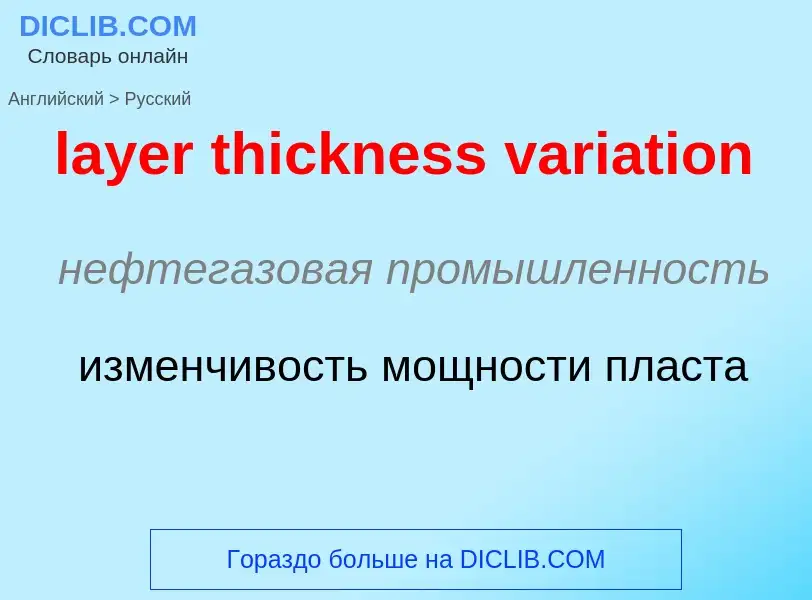Перевод и анализ слов искусственным интеллектом ChatGPT
На этой странице Вы можете получить подробный анализ слова или словосочетания, произведенный с помощью лучшей на сегодняшний день технологии искусственного интеллекта:
- как употребляется слово
- частота употребления
- используется оно чаще в устной или письменной речи
- варианты перевода слова
- примеры употребления (несколько фраз с переводом)
- этимология
layer thickness variation - перевод на русский
нефтегазовая промышленность
изменчивость мощности пласта
['hɑ:fθiknis]
общая лексика
полутолщина
толщина полупоглощения
медицина
слой половинного ослабления (полуослабления)
существительное
физика
толщина защитного слоя
при котором уровень проникающей радиации уменьшается наполовину
медицина
слой половинного ослабления (полуослабления)
Определение
Википедия
This page describes some of the parameters used to characterize the thickness and shape of boundary layers formed by fluid flowing along a solid surface. The defining characteristic of boundary layer flow is that at the solid walls, the fluid's velocity is reduced to zero. The boundary layer refers to the thin transition layer between the wall and the bulk fluid flow. The boundary layer concept was originally developed by Ludwig Prandtl and is broadly classified into two types, bounded and unbounded. The differentiating property between bounded and unbounded boundary layers is whether the boundary layer is being substantially influenced by more than one wall. Each of the main types has a laminar, transitional, and turbulent sub-type. The two types of boundary layers use similar methods to describe the thickness and shape of the transition region with a couple of exceptions detailed in the Unbounded Boundary Layer Section. The characterizations detailed below consider steady flow but is easily extended to unsteady flow.




